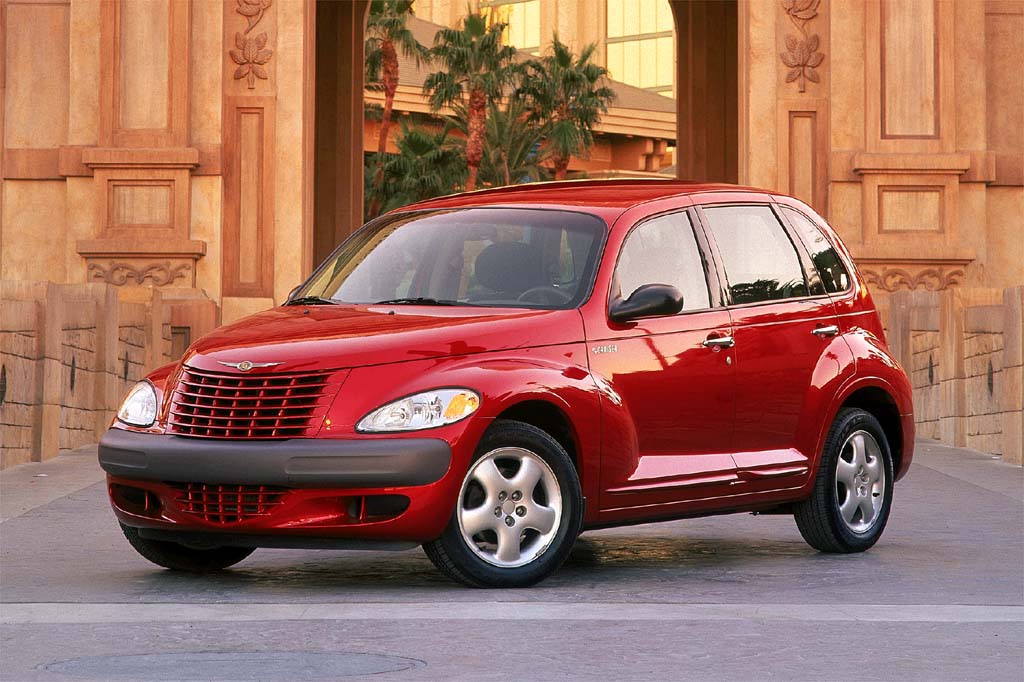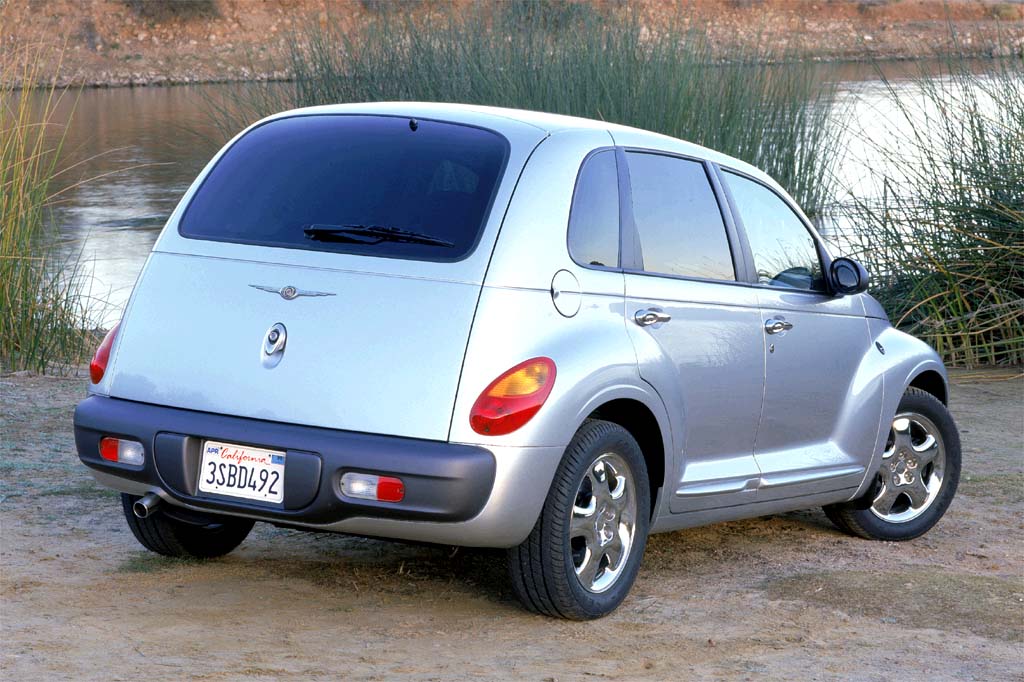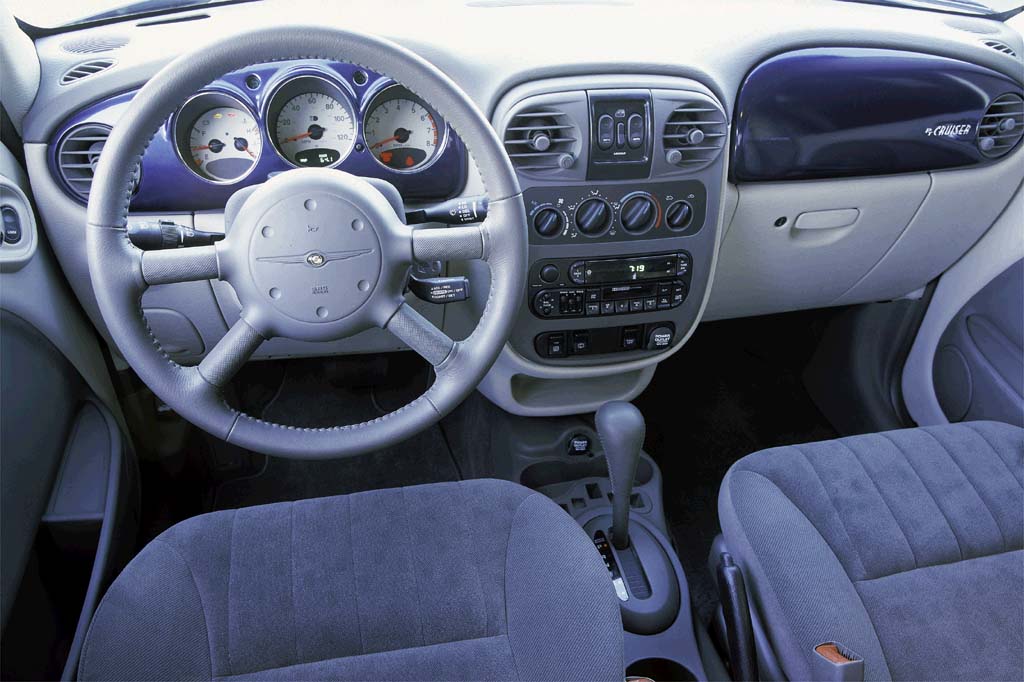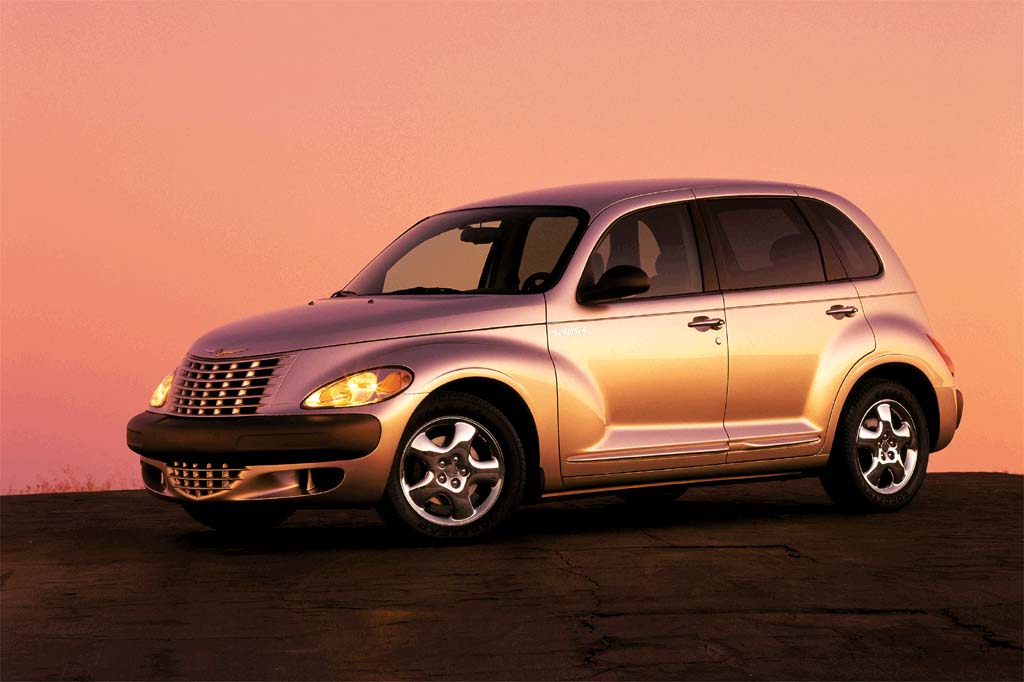| Compact car; Built in Mexico |
|
|
| Good condition price range: $2,400 – $11,500* |

2001 Chrysler PT Cruiser

2001 Chrysler PT Cruiser

2001 Chrysler PT Cruiser interior

2002 Chrysler PT Cruiser

2002 Chrysler PT Cruiser
| Pros: |
|
| Cons: |
|
It’s hard to beat this affordable vehicle’s impressive combination of room, comfort, versatility, and driving pleasure. Mediocre acceleration is the only real flaw, though performance is actually on par with other small wagons. High demand has outstripped supply since the Cruiser went on sale, and they’re not cheap secondhand.
Overview
Even before the PT Cruiser went on sale in spring of 2000, it had become a big hit in the marketplace. Customers eagerly forked over well above sticker price to get one of the early examples of the retro-styled front-drive compact wagon, which looked like nothing else at any dealership.
PT stood for Personal Transportation, and the four-door Cruiser provided precisely that–plus a lot of enthusiastic responses from other motorists on the road. Minor changes took place in fall 2000, including availability of heated front seats and yellow pearl paint.
Classified as a truck under federal fuel-economy regulations, the five-passenger PT Cruiser was designed to blend carlike comfort and roadability with practical features borrowed from minivans and SUVs. In size, it compared to the Honda CR-V, with a similar wheelbase and only 2 cubic feet less cargo volume–despite standing some 2 inches lower and measuring nearly 9 inches shorter overall.
An all-new unibody platform was used, but some mechanical components were similar to those in the subcompact Neon sedan. Sole engine was a 150-horsepower version of the familiar 2.4-liter four-cylinder, linked to a five-speed manual or optional four-speed automatic transmission.
Standard equipment included a removable 65/35 split folding rear seat, multi-position rear parcel shelf, air conditioning, tilt wheel, floor-shift console, and rear wiper/washer on a one-piece liftgate. An optional Touring Group included a firmer suspension and 16-inch tires, rather than the usual 15-inchers. With optional antilock braking (bundled with traction control), four-wheel discs supplanted the standard rear drums. Side-impact airbags were an option.
Limited Edition models included the Touring Group, leather upholstery, a power moonroof, and fold-flat front passenger seat. Front and rear power windows were standard. In early models, rear windows were controlled by console switches. Later examples got dashboard controls. Rivals include the Honda CR-V, Subaru Outback, and Volkswagen Passat wagon.
Yearly Updates
| 2002 PT Cruiser Still a hot seller in its second season, the PT Cruiser got newly optional flame accent decals for the hood and front fenders. Base, Touring and Limited Editions were offered. Base models added some previously optional items as standard equipment, including a CD player and underseat storage bin. Adjustable driver’s lumbar support went on the Limited. Side-impact airbags were standard on the Limited and optional on others. Antilock braking remained an option. |
| 2003 PT Cruiser A new turbocharged GT had 215 horsepower and 17-inch wheels. Chrysler markets it as the “PT Turbo.” Manual transmission is standard, automatic optional on. Flame decals, a chrome-trim package, or a woodgrain-body-applique “woodie” look were optional. |
| 2004 PT Cruiser New for ’04 was a 180-hp 2.4-liter turbocharged 4-cylider engine, optional on Touring and Limited models. |
| 2005 PT Cruiser The PT Cruiser is unchanged for 2005. |
| 2006 PT Cruiser All ’06 PTs got revised front fascias and dashboards. |
| 2007 PT Cruiser PT Cruiser carried over unchanged. |
| 2008 PT Cruiser The 2008 Chrysler PT Cruiser dropped the high-performance GT models from its roster. Available on base wagons was a new Street Cruiser Sunset Boulevard Edition package that included a sunroof and unique interior and exterior trim. |
| 2009 PT Cruiser The PT lost its convertible body style for 2009 but was otherwise little changed. |
| 2010 PT Cruiser The 2010 Chrysler PT Cruiser lineup shrank to a single base model and lost its available turbocharged engine. |

